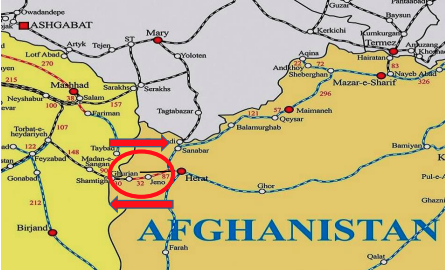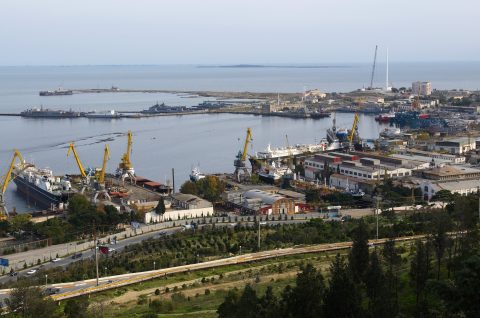China and Pakistan to include Afghanistan in BRI corridor

The China-Pakistan Economic Corridor will be extended to Afghanistan. This is what China and Pakistan have agreed about on Saturday. The countries want to help reconstruct the infrastructure of Afghanistan, which is financially stricken since the Taliban is in power.
Chinese Foreign Minister Qin Gang and his Pakistani counterpart Bilawal Bhutto Zardari have pledged to work together on Afghanistan’s reconstruction process. The extension of the China-Pakistan Economic Corridor (CPEC) is only part of this promise. It will also provide humanitarian and economic assistance.
China-Pakistan Economic Corridor
The China-Pakistan Economic Corridor is a 60 billion dollar project that includes railway lines and motorways connecting the southern ports of Pakistan – Gwadar and Karachi – with the west of China. Investments are mostly aimed at modernising the existing infrastructure in Pakistan.
It is not clear in which way the CPEC will be extended to Afghanistan. The construction of new infrastructure is costly and therefore unlikely. More likely is the modernisation of existing railway lines that link Pakistan and Afghanistan. By officially including Afghanistan in the corridor, funds dedicated to the project become available for this purpose.
Current railway links to Afghanistan
Afghanistan is already linked with Pakistan and China on several other roadmaps. One such roadmap is that of the Trans-Afghan corridor. This yet to be built corridor will provide a direct and efficient connection between Uzbekistan and Pakistan via Afghanistan. The overall route will span over 573 kilometres, starting from Termez, in southern Uzbekistan, crossing Mazar-e-Sharif, in Afghanistan, and ending in Peshawar in northeastern Pakistan. However, the project has mired in uncertainty which only increased with the Taliban taking power in Afghanistan.

Apart from this project, there is the more realistic China-Kyrgystan-Uzbekistan-Afghanistan corridor. The first trial on this corridor was carried out in September last year, although it is not a complete train journey. From Kashgar in China, containers are trucked across the border to the Kyrgyz city of Osh. It is here that they are loaded on a train, which continues its way across the Central Asian countries to reach its final destination, Hairatan in Afghanistan.
Afghanistan and the Taliban
Since the Taliban is in power, foreign investments have been largely stalled. The country is subjected to sanctions and Afghanistan’s overseas financial assets have been frozen. This has resulted in a lack of funds to complete large infrastructure projects. The Uzbek government has urged investors from the EU to look into the Trans-Afgan corridor, but enthusiasm from this part of the world is limited.
China and Pakistan, as well as Uzbekistan have however been more open for dialogue with the new government of Afghanistan, and it is therefore not surprising that it is from these countries that funds are most likely to come. Afghanistan is also more likely to be of importance for these neighbouring states, as another transit country connecting north and south of Central Asia. If the governments of China and Pakistan are truly committed, the latest agreement to include Afghanistan in the CPEC could result in great infrastructure upgrades that the country itself is unable to afford.





